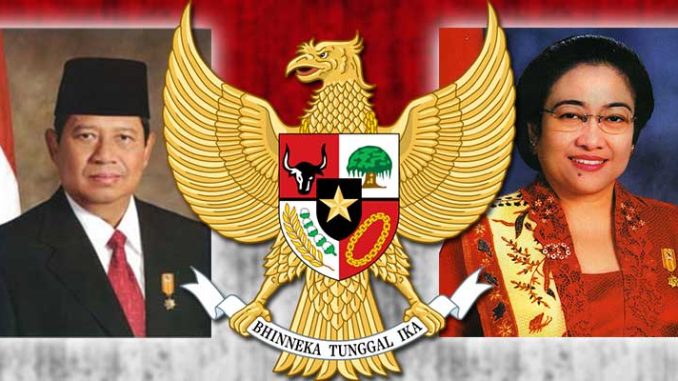
How did Susilo Bambang Yudhoyono defeat incumbent Megawati in the 2004 presidential election, given the President’s relatively successful maintenance of the economy over the last three years? Many analysts have highlighted the novel role played by public opinion in the election, the first in which voters could directly elect an Indonesian president. In this context, Susilo, a retired general, is a new player. In the April 2004 legislative election, his political vehicle, the Democrat Party (Partai Demokrat), attained 7 percent of the vote, two points above the minimum to qualify him to run for president. In the September presidential runoff, he won office with over 60 percent of the vote. What lays behind Susilo’s ascendance? The country’s demographic profile, seen in conjunction with its recent economic performance, provides the key to voter preference. Changes in the labor force brought Susilo to the presidency because Indonesian voters – both urban and rural, in Java and the outer islands – expected Susilo to create more employment than Megawati. In short, they voted for Susilo for jobs.
Under Megawati’s government (2001-2004), Indonesia’s macroeconomic indicators were positive. Economic growth rose from 3.7 percent in 2002 to 4.1 percent in 2003 and was expected to reach 4.8 percent in 2004. The inflation rate declined from 10.03 percent in 2002 to 5.06 percent in 2003. The currency strengthened fromIDR 9311 to 8577 (in USD) from 2002 to 2003, and the interest rate, as measured by the benchmark Bank Indonesia Certificate (SBI), decreased from 15.2 to 10.2 percent over the same period. [These figures were given to parliament by Finance Minister Boediono when submitting the 2005 draft budget.] Such achievement was impressive in the wake of the negative economic growth of the 1997 economic crisis.
Yet Megawati’s government seemed unable to communicate the strength of the country’s economic turnaround, and it did not increase her appeal to voters. This was probably because growth seemed driven by strong consumption rather than rising investment and exports – the type of growth that would absorb labor. It was a weakness of the Megawati government that it was unable to produce growth in sectors that would reduce unemployment. In fact, formal employment shrank by about 1.5 million in 2002 (400,000 in urban areas, 1.1 million in rural areas) and by a further 1.2 million in 2003 (656,000 and 564,000). The economy’s achievement at the macro level, therefore, did nothing for those who had to struggle for a living, and this was the economic picture seen by ordinary Indonesian voters. To the problem of unemployment, Megawati seemed to offer no solution.
In 1997, 4.2 million people, or 4.7 percent of the labor force, were unemployed. Over the three years of Megawati’s term in office, that number more than doubled to 9.13 million, or 9.1 percent of the labor force (“Menguak Kondisi Tenaga Kerja,” Bisnis Indonesia, 1 October 2004). Some of the unemployed may have been workers displaced by the economic crisis. No good estimate exists of their numbers, but it is believed that some remain unemployed while others found work in agriculture. If underemployment is added unemployment, the total reaches about 40 million. The total number of voters was estimated at 148 million.
Rising unemployment has hit younger workers the hardest, particularly the 15-to-19-year-old category. In 1999, this group registered 20.6 percent unemployment and it rose steadily over the following years: 23.3 percent (2000), 28.7 percent (2001), 34.6 percent (2002), and 36.7 percent (2003). Those who graduated from primary school account for 25.8 percent of the unemployed, junior high school graduates 23.4 percent, and high school graduates 23.4 percent. Given that suffrage begins at age 17, we can conclude that most of the unemployed were eligible to vote in the election. In fact, 15-24 year-olds comprised 30 percent of all voters.
During his campaign, Susilo promised to create more jobs. He specifically vowed to push economic growth up to 7 percent, because a growth rate of 5 to 5.5 percent is perceived to have little impact on unemployment. After the first round of presidential voting left three candidates standing (Megawati, Susilo, and the Golkar candidate, Wiranto), data from Lembaga Survei Indonesia indicated that Susilo was favored by 70 percent of urban and rural low-income voters (Tempo, “Survei LSI: Yudhoyono Ungguli Megawati,” 27 July 2004). The candidate’s media image apparently played a crucial role in generating this level of support, as Susilo was portrayed as a man capable of changing Indonesia and its economy. In the final province-by-province tally, Susilo swept thirty provinces, leaving Megawati wins in only Bali, East Nusa Tenggara, and Maluku.
It is easy to conclude that Megawati was turned out of office because she failed to create jobs. And this failure contradicted the claim that her party, the PDI-P, was a party of the ordinary people (wong cilik). High voter expectations channeled into direct presidential elections were a novelty this year, but will henceforth become commonplace as they are raised by election campaigns and shaped by media coverage.
President Susilo has still articulated no clear policies to fulfill his campaign promise of job creation. Perhaps he means to depend on fiscal strategy – the disbursal of more funds into the real sector. But the government remains in fiscal difficulty since the crisis of 1997. Meanwhile, according to the Ministry of Labor, over the period 2000 to 2005, the labor force was expected to rise from 95.7 to 107.9 million people, an increase of 12.2 million. These numbers hold clues to the future of the country’s electoral politics.
Wahyu Prasetyawan
Wahyu Prasetyawan is a PhD candidate in Indonesian Political Economy in the Graduate School of Asian and African Area Studies, Kyoto University
Kyoto Review of Southeast Asia. Issue 6 (March 2005). Elections and Statesmen
